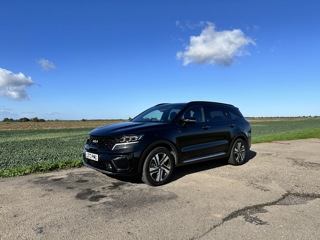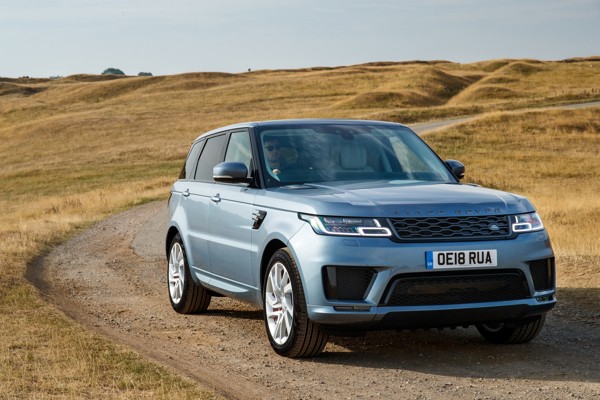Review
There’s no denying that Land Rover did a remarkable job of overhauling its Range Rover model last year. It’s now more capable, more luxurious and more efficient than ever.
It’s also quite a lot more expensive, which puts the spotlight on the next model down in the line-up: the Range Rover Sport.
In previous generations, the Sport has sat in the shadow of its bigger brother, not quite capturing the essence of ‘sport’ or the luxury of a Range Rover.
Things are quite different with the new generation Sport, however. For the first time, the Sport is now the car that it always should have been. It’s got the rugged looks, off-road capability and sublime comfort of a Range Rover, but is more compact and sportier, leading to a more engaging drive.
Land Rover’s electrification efforts for the new ‘full-fat’ Range have been carried over into the new Sport, so there’s two plug-in hybrid options and a fully electric model coming next year.

Key for fleet customers is the P440e model, which costs from £84,475. It’s equipped with a 38.2kWh battery and has a zero-emission range of 70 miles (WLTP), meaning it’s one of only a handful of cars that sits within the 5% benefit-in-kind tax (BIK) band. That means a 40% taxpayer will pay just £140 per month for the privilege of having one on their driveway.
The car’s electric capability is paired with a 3.0-litre six-cylinder petrol engine, which is a marked step-up from the four-cylinder unit used in the previous generation car. With 440PS on tap, the engine can launch the 2.7-tonne SUV from zero to 60mph in less than six seconds.
Official fuel economy is rated at more than 300mpg, factoring in the car’s immense electric range. In real-world testing we found around 55 miles of driving possible from a charge and average consumption using both power sources was 45-50mpg. This is by far the most efficient Range Rover we’ve tested to date.
If the 440PS output isn’t enough, Land Rover also sells a 510PS version that offers the same zero-emission credentials and low BIK tax.
Elsewhere in the range, there’s a pair of mild-hybrid diesels, a mild-hybrid petrol and a V8. But it’s hard to consider anything but the plug-in hybrid. Tax benefits aside, the ability to cover such a distance without burning any fuel should meet the day-to-day needs of most drivers. You can also use a rapid charger to replenish the battery in about half an hour.
The cabin borrows tech from the bigger Range Rover, offering a 13.1-inch central touchscreen and Land Rover’s latest operating system, wrapped in a sportier cabin. The centre console sits higher and is more steeply angled towards the centre of the dash, giving a more immersive driving position.
A firmer suspension set-up gives the Sport a greater sense of stability and enables the car to corner like a much smaller and lighter vehicle. Yet, none of the sportiness takes away from the smooth luxurious feel the car provides. Land Rover has really got the balance of this car just right.
While it may not appear on the choice lists of the majority of drivers, the new Sport is likely to win favour in senior manager and director-level grades where many opt for cash due to excessive BIK on the models they want to drive. Even when compared with an electric car, the Sport offers lower overall running costs. It’s about 20p per mile cheaper to run than an Audi Q8 e-tron and 10p per mile cheaper than an entry-level Porsche Taycan.
Matt has been an automotive journalist for nine years and has driven just about every new car and van that's on sale. As content editor - vehicles he is responsible for the automotive content on Fleet News and also contributes to Automotive Management. Prior to this, Matt worked in the automotive industry for 10 years.


Specs
| Manufacturer | Land Rover |
| Model | Range Rover Sport |
| Specification | Range Rover Sport SUV 3.0 P440e PHEV 38.2kWh 440 GPF SS €6 Dynamic SE Auto8 23MY |
| Model Year | 0.00 |
| Annual VED (Road tax) | £0 |
| BIK List Price | £87,475 |
| CO2 | 18g/km |
| BIK Percentage | 5% |
| Insurance Group | N/A |
| CC | N/A |
| Fuel Type | Petrol Hybrid |
| Vehicle Type | SUV and Crossover |
| Luggage capacity (Seats up) | 5litres |
Running Costs
| P11D | £87,475 |
| Insurance group | N/A |
| Fuel Type | Petrol Hybrid |
| Cost per mile | 118.41ppm |
| Fuel | 2.16ppm |
| Depreciation | 110.00ppm |
| Service maintenance and repair | 6.25ppm |
Rivals
Info at a glance
-
P11D Price
£87,475
-
MPG
338.3 (WLTP) -
CO2 Emissions
18g/km -
BIK %
5% -
Running cost
3 Year 60k : N/A 4 Year 80k : N/A -
Fuel Type
Petrol Hybrid













 Petrol Hybrid
Petrol Hybrid
















